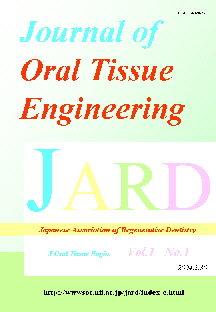Volume 6, Issue 3
Displaying 1-10 of 10 articles from this issue
- |<
- <
- 1
- >
- >|
ORIGINAL ARTICLES
-
Article type: Original Article
2009 Volume 6 Issue 3 Pages 140-151
Published: March 30, 2009
Released on J-STAGE: May 01, 2009
Download PDF (322K) -
Article type: Original Article
2009 Volume 6 Issue 3 Pages 152-158
Published: March 30, 2009
Released on J-STAGE: May 01, 2009
Download PDF (438K) -
Article type: Original Article
2009 Volume 6 Issue 3 Pages 159-166
Published: March 30, 2009
Released on J-STAGE: May 01, 2009
Download PDF (148K) -
Article type: Original Article
2009 Volume 6 Issue 3 Pages 167-179
Published: March 30, 2009
Released on J-STAGE: May 01, 2009
Download PDF (1835K) -
Article type: Original Article
2009 Volume 6 Issue 3 Pages 180-188
Published: March 30, 2009
Released on J-STAGE: May 01, 2009
Download PDF (719K) -
Article type: Original Article
2009 Volume 6 Issue 3 Pages 189-193
Published: March 30, 2009
Released on J-STAGE: May 01, 2009
Download PDF (301K) -
Article type: Original Article
2009 Volume 6 Issue 3 Pages 194-200
Published: March 30, 2009
Released on J-STAGE: May 01, 2009
Download PDF (249K) -
Article type: Original Article
2009 Volume 6 Issue 3 Pages 201-210
Published: March 30, 2009
Released on J-STAGE: May 01, 2009
Download PDF (923K)
REVIEW
-
Article type: Review
2009 Volume 6 Issue 3 Pages 211-214
Published: 2009
Released on J-STAGE: May 01, 2009
Download PDF (127K) -
Article type: Review
2009 Volume 6 Issue 3 Pages 215-222
Published: 2009
Released on J-STAGE: May 01, 2009
Download PDF (109K)
- |<
- <
- 1
- >
- >|
